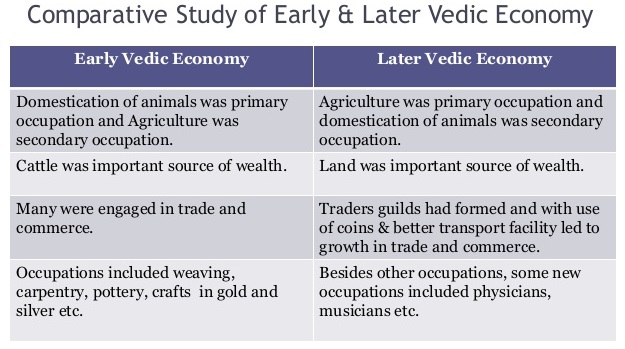Scientific Names: Have you ever wondered why every species has its own scientific names? Because the regional name of the species can differ from one state to another. In order to avoid this confusion, scientists introduced scientific names for every species and used to call the species. Scientific names are also known as biological names. Excited to know the full story about the scientific name? Then, getting into this ultimate article and reading out the details provided here helps you a lot to understand why we need a scientific name? and what is in a biological name?
Also, this concept is very beneficial for students or candidates who are preparing for various competitive exams or General Knowledge Quizzes, etc. Okay, let’s start knowing it briefly via direct links given below.
This Blog Includes:
- What is a Scientific Name?
- Examples
- Species Wise List of Scientific Names
- Why Biological Name is Important?
- Rules for Writing Scientific Names
- Why do we need Scientific Names?
- What is in a Scientific Names?
- Uses of Biological Names/Binomial Names
- FAQs on Scientific Name for All Species
What is a Scientific Name?
The scientific name uses binomial nomenclature or a two-word naming system. The name of the species is denoted by two names the first name is known as a genus name and the second name is known as a specific name or specific epithet. Also, there is a third name denoted as author citation in the form of abbreviation. The third name in the scientific notation is optional so in short, the biological name is a two-way naming system.
The third name is put forward in accordance with the rules and regulations provided by ICBN and ICZN. Present, ICBN is known as the International Code of Nomenclature for algae, fungi, and plants(ICN). Check out the further modules to have an idea about the rules of writing scientific names.
A Few Common Name with their Scientific Names as Examples
- Humans – Homo sapiens
- Orange – Citrus aurantium
- Tomato – Lycopersican esculentum
- Blackbuck – Antelope cervicapra
- Cheetah – Acinonyx jubatus
- Red Fox – Vulpes vulpes
- Indian Python – Python molurus
- Carrot – Daucas carota
- Green Gram – Phaseolies auicus
- Coriander – Coriandrum sativum
- Great horned owl – Bubo virginianus
The above list of binomial names covers all species and things like animals, vegetables, fruits, birds, humans, etc. Want to check the other common names with their scientific names of particular species then click on the available direct links.
Species Wise List of Scientific Names
| Scientific Name of Flowers |
| Scientific Names of Plants, Fruits & Vegetables |
| Birds Scientific Names |
Why Scientific Name is Important?
By the biological names, scientists and biologists can easily understand the details about the species. There are various important points that should be known about the scientific names. They are as such
- Each Organism with a single unique scientific name that seldom differs.
- A universally accepted name understood globally.
- Also, scientific names are often descriptive names that give some details about the organism of the particular species.
Rules for Writing Binomial Nomenclature
If you want to write a scientific name for any new species then there are certain rules to be followed. The rules that are must follow while writing scientific names are as such:
- Generally, Scientific names are in Latin and written in Italics.
- In the biological name, the first word indicates genus whereas the second word or name indicates Species/ Specific Epithet.
- Also, there is a rule to write the first letter of the genus in Capital letter and the first letter in a specific name in Small letter.
- Both the names in the Scientific name, when handwritten must be separately underlined.
- The name of the author occurs at the end of the scientific name and is write down in abbreviated form.
Why do we need Scientific Names?
People who are researching about the scientific names or studying about them can relate to this section. As their mind will always raise a question ie., Why do we need a biological name? This module is specially framed to answer this question.
For a better understanding of the concept, let’s take an example ie., cat. In Arabic it is called qat, in the Chinese language it is Mao, in Hindi it is Billee, and in Russian it is kat. Here, we are calling the same organism with different names in different languages in different countries. Sometimes, even within a country in various locality, the word of this specific organism may differ. The perfect solution to face this great confusion by biologists across the globe is the scientific name.
Also, we have some common names that are often misleading or often a misnomer. For example, take the common name ie, jellyfish, it is not a fish whereas it belongs to invertebrates which relate to corals and animals. So, this is not a fish. Thus in common names, there are many misleading things or misnomers to avoid all these things we have Biological Names.
What is in a Scientific Names?
Scientific names are the universal names for particular species. It holds a maximum amount of information within them. The biological names tie that organism back to its species descriptions and to its closest relatives. The names are written in Latin.
Also, it conveys details or characteristics about the organism. Some animals are named by their significance whereas some are named after celebrities. While researching on this topic, one of the reports stated that ‘In 2011 Australian researchers named horsefly as Scaptia beyonceae after Beyonce. Now, there are around one million animals with scientific names and many other organisms are still waiting for their binomial names.
Uses of Biological Names/Binomial Names
- The other term for scientific names is Binomial names and they are universally recognized and standardized.
- Classification and organization: These are comprehensively organized which makes understanding and studying characteristics of specific organisms easy and organized.
- Precision and clarity
- These are recognized even if the species are transferred to another genus on the basis of new knowledge.
- These are so unique that identifying organisms won’t lead to confusion.
- Helps in grasping the similarities and differences between various species that belong to the same genera.
FAQs on Scientific Name for All Species
1. What is the full form of ICBN?
Now, ICBN is changed to the International Code of Nomenclature for algae, fungi, and plants(ICN). Before ICBN Stands for International Code for Botanical Nomenclature.
2. ICZN stands for?
The abbreviation of ICZN is International Code for Zoological Nomenclature.
3. How important a scientific name is?
It is very important to name every species with a scientific name. It is nothing but a universal name of the particular organism. Also, people across the globe can understand the characteristics of the organism by its scientific name.






